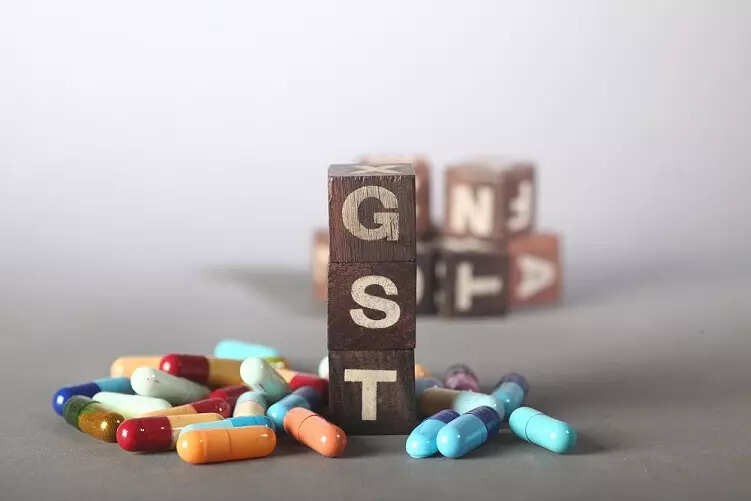In a significant move aimed at making medicines more affordable and streamlining taxation, the All India Chemists & Druggists Association (AICDA) has urged the government to implement a uniform 7% Goods and Services Tax (GST) on all medicines. The proposal seeks to replace the current complex structure where different medicines attract varying GST rates, ranging from 0% to 12%. According to the association, a single GST slab would reduce compliance burdens on chemists, lower operational costs, and ensure that life-saving drugs remain accessible to patients across the country.
The chemists’ body argues that the existing multi-tier GST structure creates confusion for both retailers and consumers. Varying rates for similar medicines often result in price disparities, administrative complexities, and potential taxation errors. By advocating for a uniform 7% GST, the association emphasizes that medicines can be made more affordable without compromising government revenue, as the proposed rate is moderate and applies broadly. Experts note that a consistent tax slab would also benefit small and independent pharmacies, which face challenges in navigating complicated tax compliance requirements.
Public health advocates have welcomed the demand, highlighting that medicine affordability is crucial for ensuring equitable healthcare access. In India, where out-of-pocket expenditure on healthcare remains high, GST uniformity could lower drug costs for millions of patients. Additionally, a simplified taxation framework would enable pharmacies to pass on cost savings directly to consumers, while easing audit and compliance procedures. The AICDA has requested consultations with policymakers to discuss the feasibility, economic impact, and implementation timeline of the proposed GST reform.
The call for a uniform 7% GST on medicines has sparked widespread discussions among stakeholders, including pharmaceutical manufacturers, retailers, and consumer advocacy groups. Large pharmaceutical companies have expressed cautious support, noting that standardizing GST rates could simplify pricing, reduce disputes with tax authorities, and improve predictability in their financial planning. At the same time, manufacturers have highlighted the need to carefully evaluate the impact on revenue, especially for high-cost specialty drugs, ensuring that production and innovation incentives are not adversely affected by a uniform tax structure.
Independent chemists and small pharmacy owners have been particularly vocal in favor of the proposal. Many argue that the current system, with its multiple tax slabs, imposes significant administrative and financial burdens, especially for businesses operating on thin margins. Accounting for varying GST rates on different medicines requires time, expertise, and resources that many small chemists struggle to afford. A flat 7% rate would ease compliance, reduce the likelihood of inadvertent errors, and free up resources that could be redirected toward improving customer service and stock management.
Consumer advocacy groups have emphasized that the proposed uniform GST could have a direct positive impact on public health. In India, where out-of-pocket healthcare expenses are high, even marginal reductions in medicine costs can significantly improve accessibility for low- and middle-income families. Advocates argue that simplifying taxation will prevent arbitrary price fluctuations and make essential medicines more predictable and affordable, particularly for chronic disease patients who depend on regular medication. By creating a consistent framework, consumers would have clearer expectations and better transparency in pricing.
Economists note that while a uniform 7% GST could reduce prices for some medicines, it might slightly increase costs for medicines currently taxed at lower rates. However, the overall effect is expected to be neutral or moderately positive, especially when administrative savings for pharmacies and compliance simplification are factored in. Analysts stress that careful calibration is required to avoid unintended financial stress on manufacturers or the government’s revenue base, ensuring that affordability goals are achieved without compromising fiscal stability.
Government officials have indicated that they are reviewing the proposal seriously, recognizing its potential benefits for both consumers and the pharmaceutical retail sector. Policymakers are consulting tax experts, economists, and industry representatives to assess the feasibility of implementation, potential revenue implications, and the timeline for rolling out the uniform GST. Officials note that lessons from other sectors where uniform GST rates were successfully introduced could guide this reform, balancing affordability, compliance, and revenue generation.
Simplifying Taxation and Ensuring Compliance
The chemists’ body has emphasized that a uniform GST rate will significantly simplify compliance for the pharmaceutical retail sector. Currently, pharmacies must categorize thousands of medicines into multiple GST brackets, maintain accurate billing records, and reconcile tax liabilities, often requiring dedicated accounting staff. A flat 7% rate would reduce administrative overhead, minimize errors, and streamline audits, benefiting both small chemists and large pharmacy chains. Legal experts note that simplification could lead to better adherence to tax regulations, reducing disputes and the risk of penalties.
Implementation of a uniform GST slab is expected to bring transparency to medicine pricing as well. Consumers would be able to understand and compare prices more easily, without being affected by fluctuating tax rates for similar drugs. This transparency is particularly important for chronic patients who purchase medicines regularly. Policymakers are being urged to weigh the economic benefits, administrative ease, and public health impact while deliberating on the proposal, ensuring that reforms are both fair and feasible.
Potential Economic and Healthcare Impact
A uniform 7% GST on medicines could have significant implications for the healthcare ecosystem. By reducing price variability and easing compliance, pharmacies could maintain stable inventory levels and optimize procurement. Patients, particularly those from low- and middle-income groups, may experience tangible cost savings, improving access to essential drugs. Analysts suggest that such reforms could also promote transparency in the pharmaceutical supply chain, discourage under-the-table transactions, and create a more accountable system. The chemists’ body asserts that uniform taxation would benefit the overall economy by balancing affordability with sustained revenue collection.

Industry associations have suggested that alongside uniform taxation, the government could consider supplementary measures to support small chemists. These include digital tools for billing and compliance, training programs on GST procedures, and awareness campaigns to educate both pharmacists and consumers. By combining tax simplification with capacity-building initiatives, authorities can ensure that smaller businesses are not disproportionately affected and can participate fully in the reformed system.
Public health experts have highlighted that the GST simplification could also improve the efficiency of the medicine supply chain. Standardized rates would reduce discrepancies in pricing across regions, making inventory management and distribution more predictable for pharmacies and wholesalers. This, in turn, could reduce wastage, improve stock availability, and ensure timely access to essential drugs, particularly in semi-urban and rural areas where supply disruptions are more common.
Critics of the current GST structure argue that the existing tiered system has led to confusion, misclassification, and occasional disputes with tax authorities. In some cases, minor errors in categorizing medicines can lead to penalties, legal challenges, and financial strain for chemists. A uniform GST would eliminate these complications, providing clarity and reducing the administrative burden. This clarity benefits not only chemists but also regulators and auditors, streamlining compliance and oversight.
The proposed uniform GST also aligns with broader national goals of simplifying taxation and promoting ease of doing business. By reducing the number of slabs and standardizing procedures, the government can enhance efficiency and reduce bureaucratic hurdles for both businesses and consumers. Analysts argue that such reforms could also create a precedent for further streamlining in other regulated sectors, where multi-slab taxation complicates compliance and enforcement.
Finally, the chemists’ demand for a uniform 7% GST on medicines represents a confluence of economic, administrative, and public health priorities. By reducing costs for consumers, easing compliance for chemists, and maintaining predictable revenue for the government, the reform could create a more equitable and efficient pharmaceutical ecosystem. Stakeholders are hopeful that, once implemented, this initiative will not only simplify taxation but also improve accessibility, affordability, and transparency in India’s medicine market, ultimately benefiting millions of patients across the country.

Implementing a uniform 7% GST on medicines does come with challenges that policymakers must navigate carefully. One key concern is the potential regional disparity in pricing, as different states currently apply varying GST rates. Harmonizing rates across all states could require adjustments in local tax structures and coordination with state governments. Authorities will need to ensure that these changes do not inadvertently increase costs for certain regions or disrupt supply chains that have adapted to existing tax frameworks.
Another challenge involves managing the impact on high-value specialty medicines, which often attract higher GST rates due to their cost and complexity. Reducing the tax rate for these drugs could slightly affect government revenue, while increasing rates on currently lower-taxed essential drugs might marginally raise costs for vulnerable populations. Careful calibration and exemptions for critical medicines may be required to maintain affordability while preserving fiscal balance. Policymakers may also need to implement phased rollouts or pilot programs to assess the effects before full nationwide implementation.
Pharmaceutical companies and distributors will also face operational adjustments. Inventory management, accounting systems, and billing software need to be updated to reflect a uniform tax rate. Training employees, communicating changes to chemists, and ensuring smooth transitions will require significant coordination. Analysts emphasize that, despite short-term challenges, these operational changes are manageable and, over time, will streamline processes, reduce errors, and lower compliance costs, benefiting both businesses and consumers.
In the long term, a uniform GST could transform India’s pharmaceutical sector by promoting transparency, simplifying taxation, and enhancing competitiveness. Pharmacies, especially smaller retailers, will experience reduced administrative burdens, while consumers may benefit from more predictable pricing and wider access to medicines. Furthermore, a streamlined tax system could encourage more businesses to formalize operations, improving regulatory compliance and enabling better data collection for health policy planning. Overall, this reform has the potential to strengthen the pharmaceutical ecosystem, improve public health outcomes, and contribute to a more equitable and efficient healthcare system nationwide.
Follow: Karnataka Government
Also read: Home | Channel 6 Network – Latest News, Breaking Updates: Politics, Business, Tech & More


